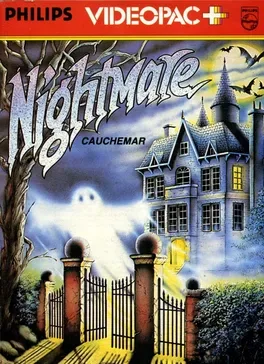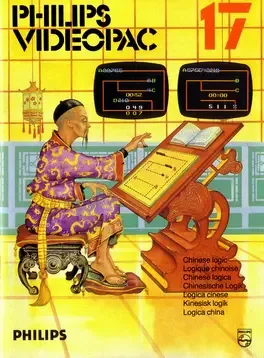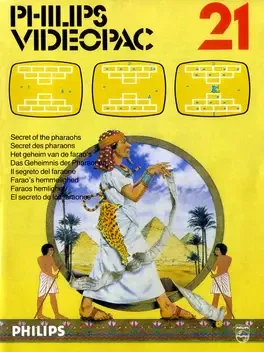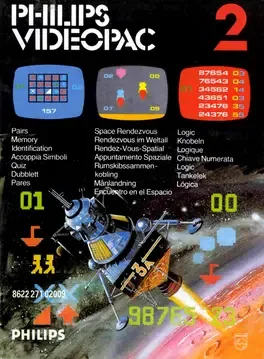Popular games published by company N.V. Philips Gloeilampenfabrieken

In Nightmare the player controls a visitor to a haunted mansion. The goal is to escape from it through a constantly moving hatch in the attic. His job will be made harder by the ghosts who are still lingering around the house. The player has to climb three floors to reach the attic, and there is one ghost for each floor.

The player has to move a sequence of numbers (9 to 0) from the point A of a pattern of lines to point D (or B in the variations). The numbers must be placed in point D in the same descending order. There are two other points to which the numbers can be moved, B and C. If one or more numbers are parked in one of the points, the player can only additionally move to that point numbers which are lower than the last one already parked. The numbers can be moved one by one only and to do so the player has to type the letter of origin and then type the destiny letter. Moves can be undone by pressing the "clear" key. The computer keeps track of the time elapsed and the number of moves made by the player, also showing the minimum amount of moves to solve the puzzle. There are 9 other possible variations, with the difference of having the way to point D blocked and different amounts of numbers to move. Those variations can be selected by pressing "reset" and the desired number, as follows: one figure - minimum number of moves: 1 two figures - minimum number of moves: 3 three figures - minimum number of moves: 7 four figures - minimum number of moves: 15 five figures - minimum number of moves: 31 six figures - minimum number of moves: 63 seven figures - minimum number of moves: 127 eight figures - minimum number of moves: 255 nine figures - minimum number of moves: 511

Secret of the Pharaohs is a puzzle game for two players. Each player has to find the correct position of stones in the Pharaoh's pyramids. The screen is horizontally divided in the half, and the pyramids have four blocks in the lower layer (or higher for the top player), three in the middle and one at the top (or bottom for the top player). Each block has two possible positions for placing the stones, and after the players place them, a number will appear above (for the up player) or below (for the down player), showing how many of them are correctly placed. Players must then relocate the stones until all of them are placed correctly. When it is done, the higher (or lower) layer of blocks will be liberated. The player who first places all the stones correctly in all the layers wins.

Three games are available in this compilation: Pairs (selected by pressing "1") is the same game as Matchmaker!, a regular Memory game. A matrix with 20 letters appears on the screen and the player has to find pairs of symbols hidden by the letters. Two counters will be displayed: time and number of matches. In two players mode (selected by pressing "2"), the players share the matrix and the one who makes more matches win. Space Rendezvous (selected by pressing "3") is somewhat similar to Lunar Lander. Two players have to try to link up their spaceships to the orbiting mother ship, while avoiding hitting the ground. Each ship has 50 megajoules of power and will be refueled when a perfect link-up is performed. A counter will be displayed for each player, and wins the player who first performs 10 perfect link-ups. If one player goes out of fuel, he's out of game. Logic (selected by pressing "4") is the same game as Logix!. The player has to guess a sequence of five different digits. The player types in the first try and the computer will display a two digit number with the number of correct digits to the right and the number of correctly placed digits on the left. The player has then to continue guessing the sequence based on the clues given. The object is to solve the problem in the least number of tries, counted on the left on the screen.

Two titles are available in this cart: - A Labyrinth Game is exactly what the title defines. The player has to move a pawn from the left side of a labyrinth to the exit on the right side. - Supermind is a code breaking game. Four question marks will be displayed, along with the number of symbols left to be entered. The player enters four symbols of choice and if they're correct but misplaced, a red number will appear in the right of the screen (with the number of correct symbols guessed). If the symbol is correct and placed in the right order, it will be displayed in white. The computer keeps track of the number of tries taken and the game ends when all symbols were discovered and placed in the right order.